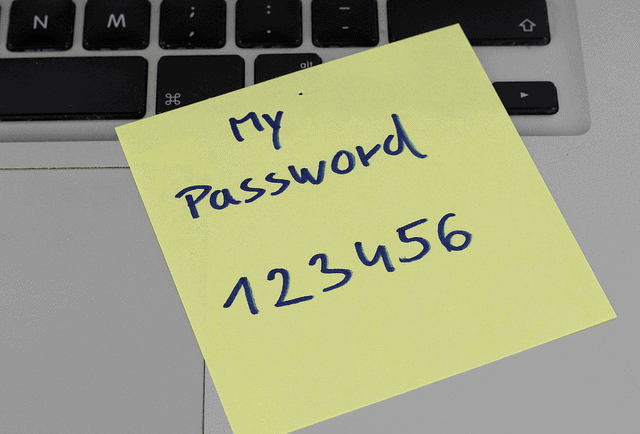So, 192.168.1.7 is a private IP address from class C of the IPv4 category of IP addresses. All the addresses starting with 192 are kept aside for use as individual addresses. As with the other lectures of this range. It is also recognized by the first three bits.
Furthermore, 192.168.1.7 may be a “default gateway” for many routers. A default gateway is where the traffic is redirected. It is when the packets don’t match any other destination. It’s like a default destination.
It is one of the most popular and most used IP addresses out there, and it is used and preferred by many routers. One name that may sound familiar to you that uses 192.168.1.7 is D-link. As I said, as it is a private IP address, it can come in handy to elude clashes among IP addresses. Also, 192.168.1.7 can be utilized to log into the router’s settings block.
See also: Huawei Router IP Address, Login and Complete Guide
Contents
What Can Login To A Router Help You With 192.168.1.7
Isn’t it obvious? There may be several reasons why you need to access your router’s settings. You may want to change the name of the wifi or your password. You may want to manage the security measures of your network.
Apart from these, you might want to adjust your firewall settings or change your router’s address. For any of these, you have to log in to your router.
Now that I have told you the “whys,” let me tell you about the “hows.”
I will walk you through logging into the router’s settings using 192.168.1.7.
Steps Regarding The Login
Here are the steps that if you follow attentively, you will get to access your router’s settings using 192.168.1.7, and then you can tinker with stuff as you want, modifying what you want. But be careful not to disrupt the network, as it can be complicated to get it up and to work again.
See Also: 192.168.0.1 Admin Login, Password, and IP [Complete Guide]
So here we go:
- You will need a stable internet connection to log in, so check that it is. If you use wifi, make sure it is working correctly. Refresh it before proceeding to be sure.
- In the second step towards logging in to your router’s admin portal, open your web browser. Type “http://192.168.1.7” into the address bar, which you mostly use to search on the Google search engine. Use Chrome or Firefox, which supports various advanced plugins and such features.
- The next one is the primary step. It has the login form, where you should fill in your details. This is the authorization step. So you enter your user ID and the password and hit the login button to go on. Now, there can be two scenarios.
- First, you had never changed your credentials, but you can’t recall the default ones. You can check the box of your router or the guide that comes with it.
See Also: 192.168.2.2 Admin Login, Password, and IP [Complete Guide]
Follow Further for Safety
Do copy them on a piece of paper so that you do not misspell anything.
- In the second case, you did alter them, but now you don’t remember. To get through this, reset your router, and when it is back to default settings, you may log in with default details. A definite win-win situation
- However, if you return the router to its default settings, all prior locations will be lost. Remember this before you do anything, and note down everything necessary in case you need it later.
- And also, every step turns out the way it should. You will have several different settings of the 192.168.1.7 router in front of you. They will be divided into categories. It includes network settings and advanced settings. Also, you can change these according to your requirements.
How To Deal With Commonly Occurring Issues
Anything and everything, no matter how technical/non-technical, has some issues that come with it. Accessing the router settings of 192.168.1.7 is no different. Some problems are pretty commonplace.
I am discussing them below for your ease:
- Sometimes, you can’t reach the page because you miswrote the IP address; you may have miswritten digits or put some other symbol instead of dots in the intervals. So be watchful when you are typing.
- Sometimes, you cannot connect to the local host. It is because the connection wires have no proper fit. So, choose the right fit and have a decent working connection.
- Write down your credentials if you have a habit of forgetting.
- Sometimes, 192.168.1.7 is not your default gateway. You can find out yours by opening the command prompt using “cmd.” Then, you can type the “ipconfig” command to know your correct gateway.
FAQs
Is 192.168.1.7 appropriate for both novice and experienced users?
Yes, people with all levels of technical expertise can access the admin page at 192.168.1.7, thanks to its user-friendly UI. Hence, advanced users can manage more complex capabilities, while novice users can easily set up wifi and security settings.
Can I troubleshoot network problems through the 192.168.1.7 admin login?
Yes. You can identify and troubleshoot connectivity issues, see connected devices, and check for firmware updates on the admin page. It also helps to keep a steady and dependable network connection.
How does 192.168.1.7 simplify router management?
By providing a centralized platform to configure every part of your network, 192.168.1.7 streamlines router management. Complex manual settings for specific devices are no longer necessary as a result.
What is good internet speed?
Homes with four or more connected devices and occupants will undoubtedly need at least 25 Mbps download rates. For homes with intensive internet usage, even higher speeds of at least 100 Mbps are occasionally required.
Conclusion
We have come to the end of this article. Also, it covers everything there is about the prominent 192.168.1.7. It will answer all the questions you may have about the same. If you have any suggestions regarding the same, leave them in the comments down below.
See Also: 192.168.2.1 Login Login, Password, and IP [Complete Guide]
You can always find me with a cup of coffee Googling anything and everything related to the networking. Refer to our detailed How-To Guides on wifi routers and never face any issue with router again!


